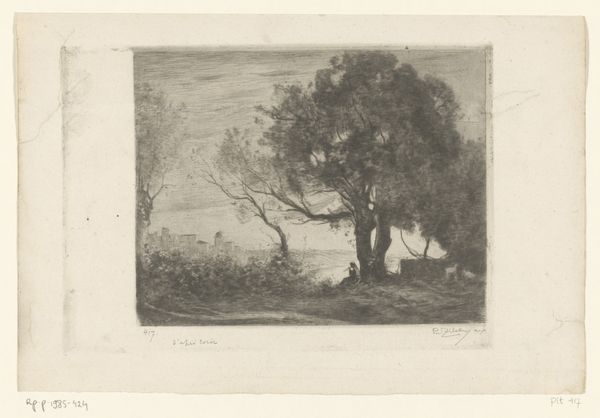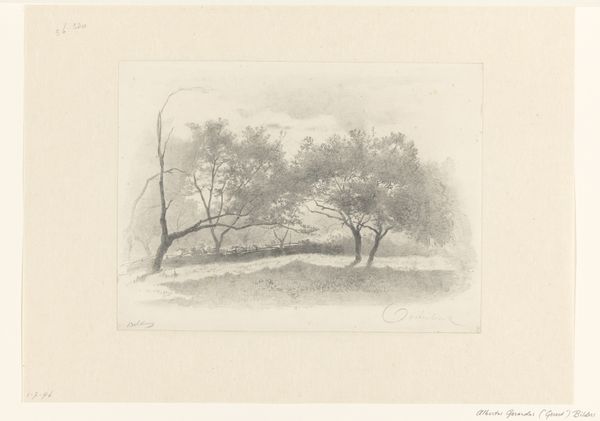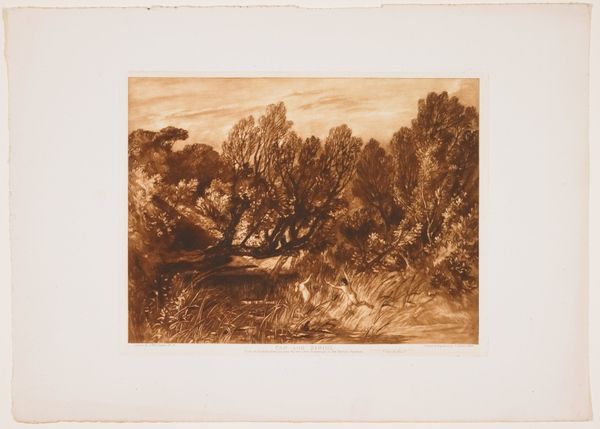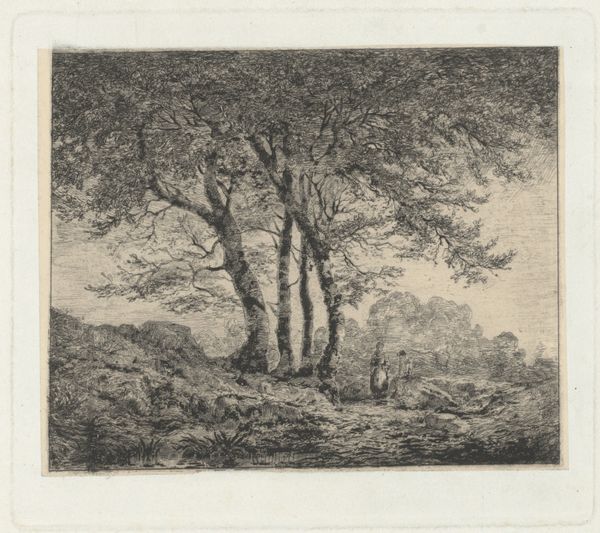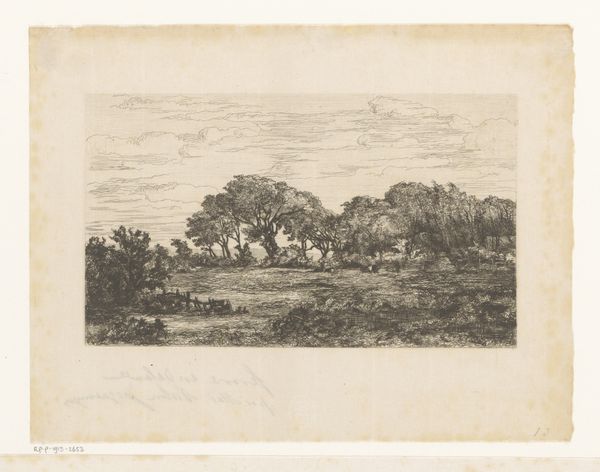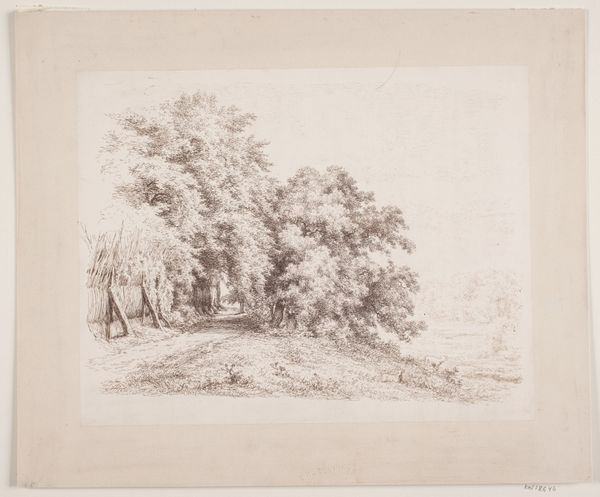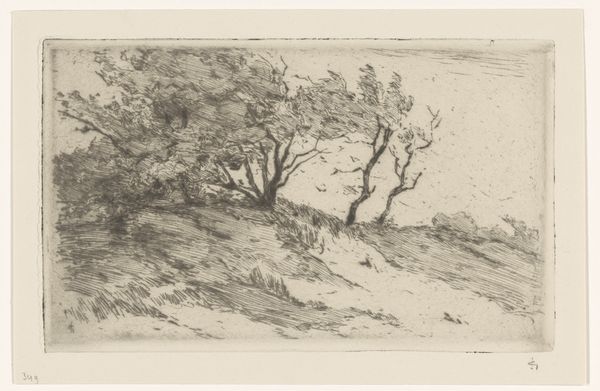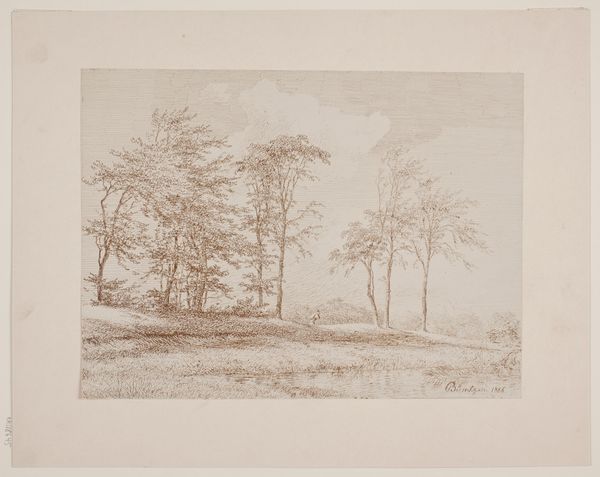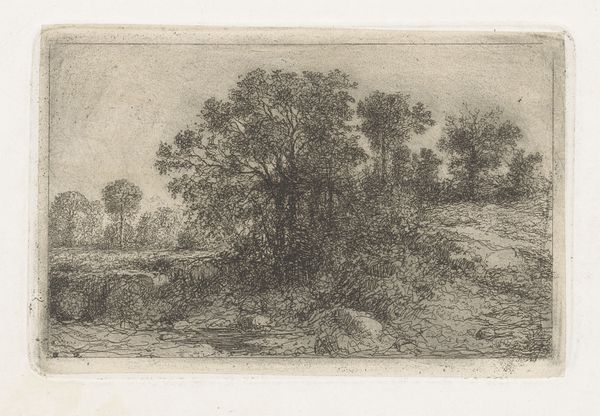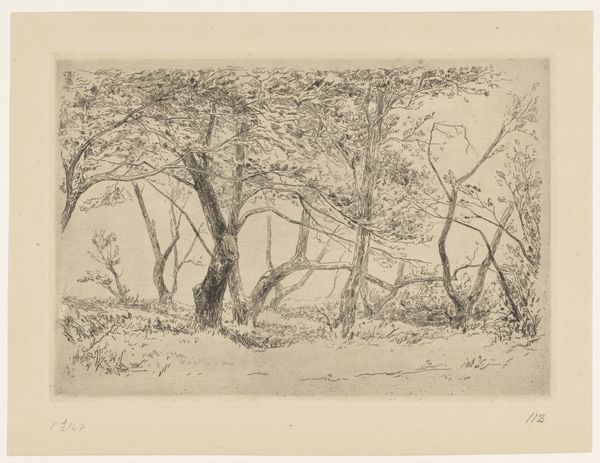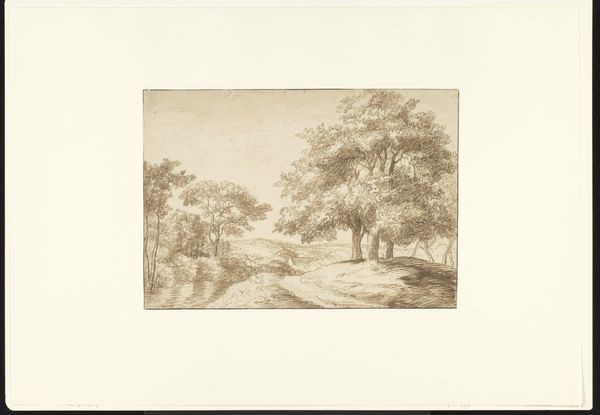
Dimensions: height 159 mm, width 196 mm, height 179 mm, width 217 mm
Copyright: Rijks Museum: Open Domain
Théophile de Bock created this print, Landscape at Night, using etching, a technique that demands both precision and patience. The artist would have started with a metal plate, covering it with a waxy, acid-resistant ground. Then, using a sharp needle, de Bock scratched his design into the ground, exposing the metal beneath. The plate was then immersed in acid, which bit into the exposed lines, creating grooves. After removing the ground, the plate was inked, the surface wiped clean, and the ink remaining in the grooves transferred to paper under high pressure. Look closely, and you’ll see the rich texture achieved through this method. The depth of the lines varies, creating a sense of depth and shadow. The etching process itself, with its reliance on chemical action and mechanical reproduction, reflects the industrialized world in which de Bock lived. Though seemingly worlds away from the landscapes he depicted, the print is a product of its time. Paying attention to materials and making allows us to see beyond the image itself, recognizing the complex layers of history and technique embedded within.
Comments
No comments
Be the first to comment and join the conversation on the ultimate creative platform.
